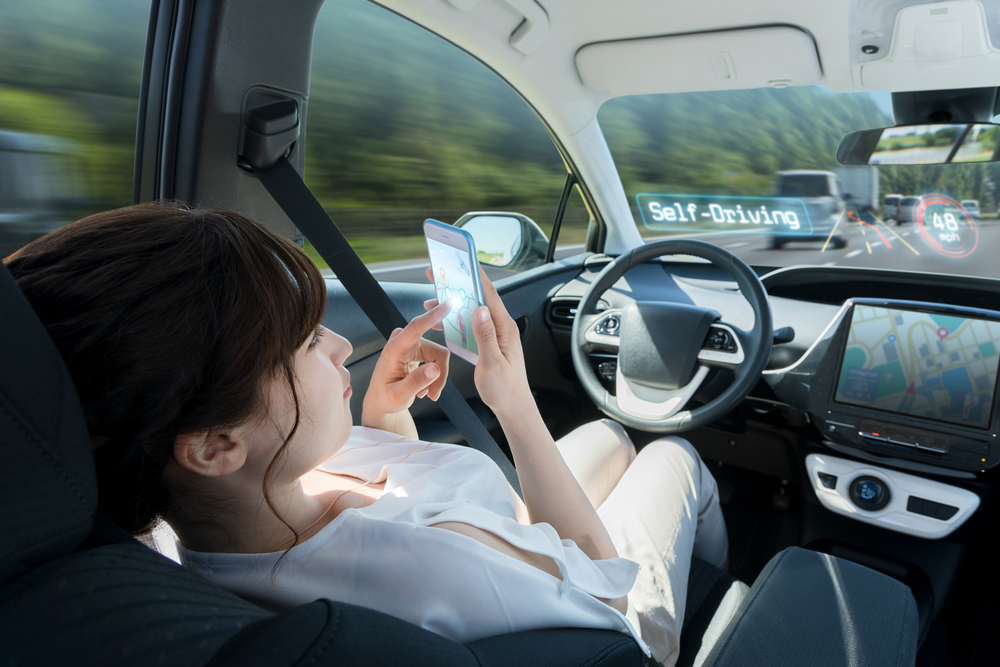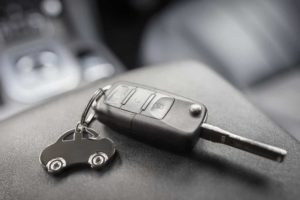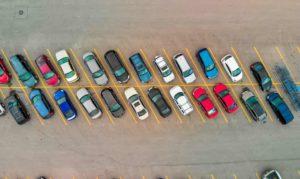Autonomous car technology has come a long way. But does that mean we’re all going to be driving self parking cars in the next few years? And what exactly do we mean by self parking? Is it the same as driverless parking or autonomous parking?
Here at Spacer, we’ve also been looking forward to a future with autonomous cars, so we’ve put together a helpful guide to understanding what is self parking and how we expect to see it become more commonplace in the next few years.
For the less-than-confident parallel parkers and anyone else who would gladly give up the hassle of parking, get ready to learn all about self parking cars!
First, some clarifications on self parking cars
Anytime that technology rapidly develops, there’s bound to be some confusion about terminology. And you’ve heard the phrases driverless parking, autonomous parking, and self parking thrown around interchangeably. It’s probably a good idea to break down the different terms.
Let’s start with the most straightforward: self parking cars. These are cars with built-in technology so it can park itself with minimal or no help from a human driver. We’ll discuss this in more detail in a moment, but these cars use sensors and cameras to maneuver themselves into a parking space.
So, on one side, you have cars that can park themselves. But that’s not the only automated parking technology out there.
On the other side, you have autonomous parking systems. These are the automatic valet parking structures in which any ordinary car can be transported to a parking space with the use of a mechanical system. We covered these fascinating parking structures back in March, in our article What’s the Deal with Automated Parking Systems?
The difference, of course, is that self parking cars have the technology to park themselves in any parking landscape. Automated parking structures can park any car within its system, regardless of the technology in the car.
As different as the two are, driverless parking and autonomous parking can refer to either system.
In this article, we’re talking about self parking cars, but it’s a good idea to have the distinction in your head if you plan on staying up-to-date on future developments.
What is the history of self parking cars? How did we get here?
To be fair, for much of the history of cars, parking wasn’t the top consideration. Instead, inventors and engineers were much more interested in creating a car that could drive itself. It’s much more exciting to see an autonomous car speeding down the road than to see one ease its way into a parallel parking spot.
And, as early as 1925, the world got a taste of what a driverless car could look like. That summer, Francis Houdina paraded his radio-operated vehicle down Broadway and Fifth Avenue in New York City. It was far from a completely driverless car – an operator was always nearby to control the car from a distance. The show ended in a crash with another car after various near misses. But, the experiment left Americans with a desire for a driverless future.
Unfortunately, we would have to wait until technology caught up with our lofty ambitions before self driving, and thus self parking cars, could become feasible. Until we were able to figure out a way to program a car not only to drive on a predetermined route but also to react to real-time stimuli, there was no way to ensure that these cars would be safe. We still haven’t gotten to that point, although programs like Waymo, formerly the Google Self-Driving Car Project are getting us closer.
It’s not surprising that car manufacturers have opted to take smaller strides in self driving technology while waiting for safe fully autonomous cars. Cruise control is an early example of this technology. But a range of car makers, from Nissan to Audi to Tesla, have taken it further with driver assistance technology. This is everything from lane tracing to collision detection and – you guessed it – self parking.
The Toyota Prius was the first car to feature parking sensors in 2003, which could prevent fender benders during parking. Even before then, Nissan had made parking easier by incorporating reverse parking cameras in 2000.
Throughout the 2010s, the race was on for fully self parking cars, with BMW, Tesla and Volvo developing prototypes as quickly as possible.
In 2014, BMW announced that they would be rolling out an automated parking car, the i3, that could be controlled with a smartwatch. It seems that they later dropped that smartwatch promise, but you can still use the BMW i3 parking assist feature to have the car parallel park for you. All you have to do is activate the parking assist function, drive slowly past an open parallel parking spot. Press a button and take your hands off the wheel. The car will do the rest.
Today, you can find self-driving options, either already on the market or soon to be released, from Jaguar, Ford, the VW Group, and more. Some of them are fully automated, while others require you to keep your foot on the gas or brake pedal. All of them require a human to be present during the parking process.
The future of self parking cars
As it stands today, self parking in cars means that we still have to be behind the wheel while the car is maneuvering into a space. But some car manufacturers, like Tesla, are promising an even more autonomous future.
As far back as 2016, Tesla has been teasing the idea that you could set your car to a self parking valet function. With this option, you would be able to drive up to the curb of your location, press a button, and get out of the car. Then, your car would drive itself to the nearest parking space. This option would marry self driving with self parking in a way that has many people wondering if we’re finally getting the fully autonomous cars we’ve been dreaming about since Houdina’s time.
For the time being, though, Tesla is trying to get their car to market while contending with legal parking restrictions, so we may have a bit of a wait. And, at the same time, Tesla CEO Elon Musk has been busy developing the technology for a self-landing rocket for SpaceX. As you can imagine, the technology for a self-landing rocket is quite a bit different from a self-parking car, although both will benefit from developments in the computers that navigate them.
Don’t have the convenience of a self parking car? Get a convenient parking space instead
While we’re all waiting for that ideal future of self parking valet, you might consider simply booking convenient off-street parking in the area where you spend most of your time.
Whether you’re looking for parking in the busiest downtown area of your city or additional parking in your neighborhood, Spacer has affordable options everywhere, including New York, Austin, Seattle, San Diego, Boston and many more!
And you don’t have to have the latest technology to enjoy this stress-free parking option!
What do you think about the self parking car movement?
Are you excited for a future filled with autonomous cars? Are you looking forward to being able to leave the hassle of parking behind? Here at Spacer, we’d love to hear your thoughts on current and future self parking cars.




